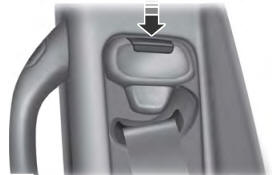Ford Explorer: Steering Wheel and Column Electrical Components / Removal and Installation - Steering Column Control Module (SCCM)
Ford Explorer 2020-2025 Service Manual / Chassis / Steering System / Steering Wheel and Column Electrical Components / Removal and Installation - Steering Column Control Module (SCCM)
Removal
NOTE: Vehicle without police package shown, vehicle with police package and others similar.
NOTE: Removal steps in this procedure may contain installation details.
-
NOTE: This step is only necessary when installing a new component.
Book Windscreen Repair & Replacement Services in Milton KeynesNOTE: The PMI process must begin with the current SCCM installed. If the current SCCM does not respond to the diagnostic scan tool, the tool may prompt for As-Built Data as part of the repair.
Using a diagnostic scan tool, begin the PMI process for the SCCM following the on-screen instructions.
-
Remove the clockspring.
Refer to: Clockspring (501-20B Supplemental Restraint System, Removal and Installation).
-
Disconnect the SCCM electrical connectors and position aside the harness.
.jpg) |
-
Remove the retainers and the SCCM.
Torque: 35 lb.in (4 Nm)
.jpg) |
Installation
-
To install, reverse the removal procedure.
-
Using a diagnostic scan tool, complete the PMI process for the SCCM following the on-screen instructions.
 Removal and Installation - Ignition Switch - Vehicles With: Keyless Vehicle System
Removal and Installation - Ignition Switch - Vehicles With: Keyless Vehicle System
Removal
NOTE:
Removal steps in this procedure may contain installation details.
Release the clips and remove the trim panel.
Remove the retainers...
 Removal and Installation - Steering Column Control Switch
Removal and Installation - Steering Column Control Switch
Removal
NOTE:
Removal steps in this procedure may contain installation details.
Remove the steering column shrouds.
Refer to: Steering Column Shrouds (501-05 Interior Trim and Ornamenta..
Other information:
Ford Explorer 2020-2025 Owners Manual: Switching Cruise Control On and Off
About Cruise Control Cruise control lets you maintain a set speed without keeping your foot on the accelerator pedal. You can use cruise control when your vehicle speed is greater than 20 mph (30 km/h). WARNING: Do not use cruise control on winding roads, in heavy traffic or when the road surface is slippery...
Ford Explorer 2020-2025 Service Manual: Removal and Installation - Headliner - Lowering
Special Tool(s) / General Equipment Pick Hook Interior Trim Remover Remove the following items: On both sides. Remove the A-pillar trim panel. Refer to: A-Pillar Trim Panel (501-05 Interior Trim and Ornamentation, Removal and Installation)...
Categories
- Manuals Home
- 6th Generation Explorer Owners Manual
- 6th Generation Explorer Service Manual
- General Procedures - Rear Camber Adjustment
- Interior Trim and Ornamentation
- Traction Control
- New on site
- Most important about car
Seatbelt Height Adjustment
WARNING: Position the seatbelt height adjuster so that the seatbelt rests across the middle of your shoulder. Failure to adjust the seatbelt correctly could reduce its effectiveness and increase the risk of injury in a crash.

Copyright © 2025 www.foexplorer.com
